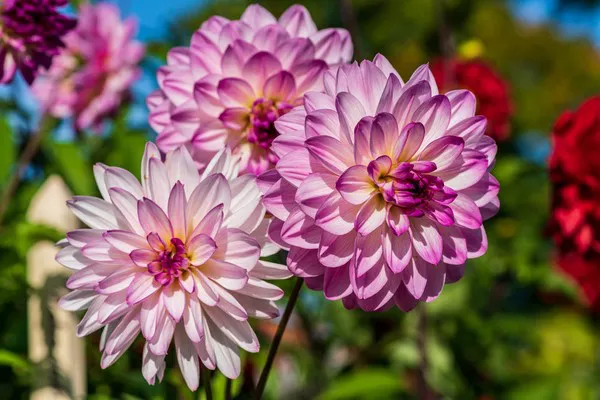Begonias, with their vibrant and diverse blooms, are a popular choice among gardeners and enthusiasts alike. These flowering plants are known for their ornamental value and adaptability to various growing conditions. However, a common question that arises among begonia enthusiasts is, “How long do begonias flower for?” In this comprehensive guide, we will explore the factors influencing the flowering duration of begonias, care practices to extend their blooming period, and related insights into these charming plants.
The Factors Influencing Begonia Flowering Duration
The duration of begonia flowering is influenced by a range of factors, both intrinsic to the plant and extrinsic environmental conditions. Understanding these factors is essential for optimizing the flowering period of your begonias.
1. Variety and Species
Different begonia species and varieties exhibit varying flowering durations. Some varieties are bred specifically for extended blooming periods, while others naturally have shorter flowering phases. Tuberous begonias, for instance, can bloom for several months, while fibrous-rooted begonias may have shorter flowering times.
2. Environmental Conditions
Light Exposure: Light plays a pivotal role in begonia flowering. Adequate light, whether direct or indirect, is crucial for triggering and sustaining the blooming phase. Varieties that require more light might have longer flowering durations compared to those adapted to lower light conditions.
Temperature: Temperature fluctuations significantly impact begonia flowering. Cooler temperatures often promote longer-lasting blooms, while excessive heat can lead to premature fading. Maintaining a suitable temperature range based on the specific begonia variety is essential for maximizing flowering duration.
Humidity: Begonias, often native to tropical regions, appreciate higher humidity levels. Adequate humidity can prolong the flowering phase by preventing stress-related issues such as wilting or drying of petals.
Extending the Begonia Blooming Period
While the inherent characteristics of begonia varieties play a role in their flowering duration, gardeners can employ several techniques to extend the blooming period and enjoy their begonias’ beauty for a more extended time.
1. Adequate Care
Watering: Maintaining consistent and appropriate watering practices is vital for begonias. Avoid overwatering, as this can lead to root rot, but also prevent underwatering, which may cause stress and early flower drop. Always water at the base of the plant to prevent moisture from accumulating on the leaves, which could invite diseases.
Soil: A well-draining potting mix rich in organic matter is ideal for begonias. Proper soil conditions ensure that the plant receives the necessary nutrients and moisture for sustained flowering.
2. Deadheading and Pruning
Regular deadheading, the removal of spent flowers, encourages the plant to channel its energy into producing new blooms rather than producing seeds. Pruning leggy growth and removing yellowing leaves also contribute to maintaining the plant’s overall health and flowering capacity.
3. Fertilization
Applying a balanced, water-soluble fertilizer at the appropriate intervals can promote continuous flowering. However, excessive fertilization should be avoided, as it may lead to excessive vegetative growth at the expense of blooms.
4. Pest and Disease Management
Vigilance against pests and diseases is essential. Regular inspection and timely intervention, preferably with natural or organic solutions, ensure that the plant remains stress-free and can focus on flowering.
The Role of Begonias in Horticulture and Aesthetics
Apart from their flowering duration, begonias contribute significantly to horticulture and aesthetics. Their versatility in terms of growth habits, leaf shapes, and flower colors make them sought-after choices for various landscaping and gardening purposes.
1. Garden Beds and Borders
Begonias, whether the fibrous-rooted or tuberous varieties, are often used in garden beds and borders to add vibrant splashes of color. With proper planning and selection of complementary plants, gardeners can create captivating displays that extend the overall visual appeal of their outdoor spaces.
2. Hanging Baskets and Containers
Trailing or cascading begonia varieties are perfect for hanging baskets and containers. These versatile plants drape elegantly over the sides, creating dynamic compositions. By selecting begonias with staggered flowering times, it’s possible to ensure a continuous display of blooms throughout the growing season.
3. Indoor Décor
Begonias are not limited to outdoor spaces; they also thrive indoors. Their relatively compact size, combined with their striking foliage and flowers, makes them excellent choices for enhancing indoor aesthetics. With proper care and attention to lighting and humidity, begonias can provide a touch of natural beauty within the confines of interior spaces.
Conclusion
The flowering duration of begonias varies based on factors such as species, variety, and environmental conditions. By understanding these factors and implementing appropriate care practices, gardeners can extend the blooming period of these captivating plants. Whether gracing outdoor landscapes or adding elegance to indoor settings, begonias continue to be beloved for their aesthetic appeal and versatility in horticultural design. Embracing the art of cultivating begonias offers a rewarding journey filled with vibrant blooms and endless possibilities.


